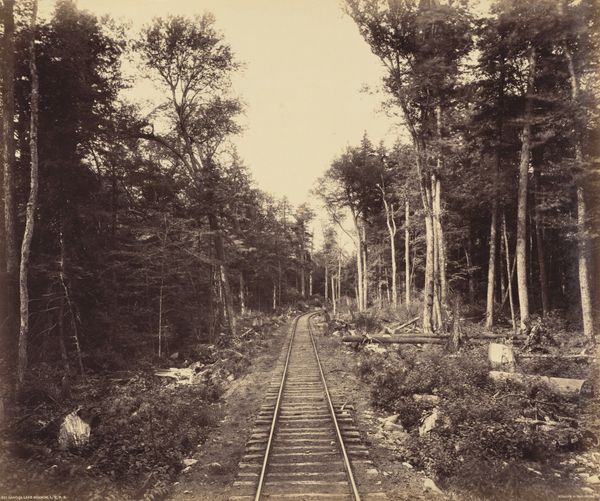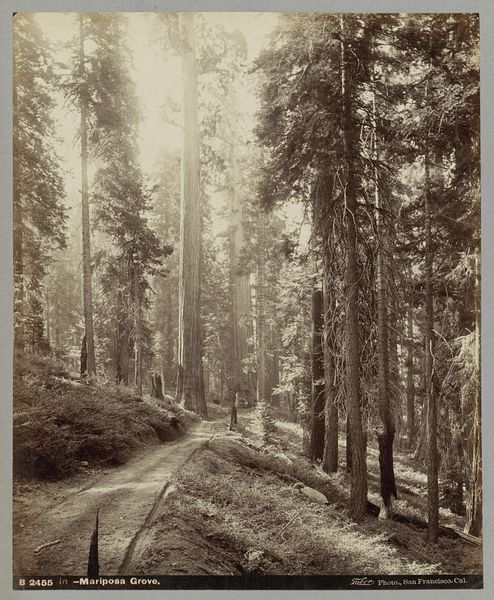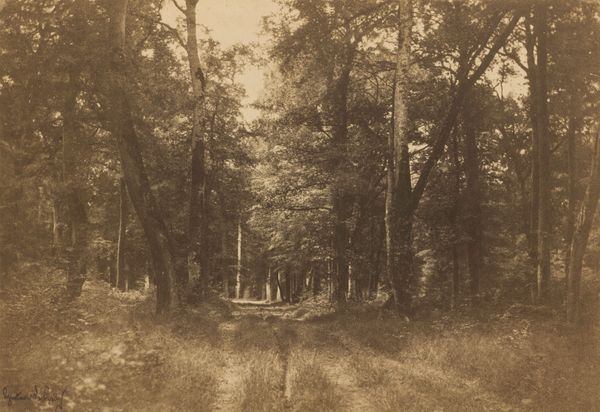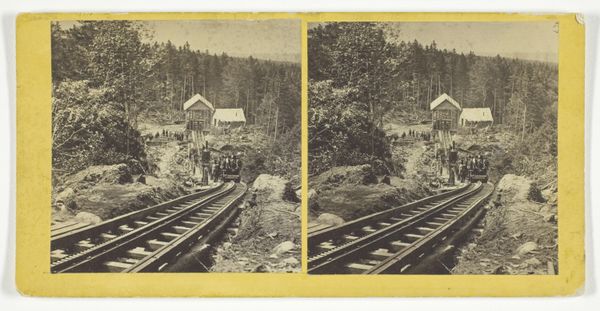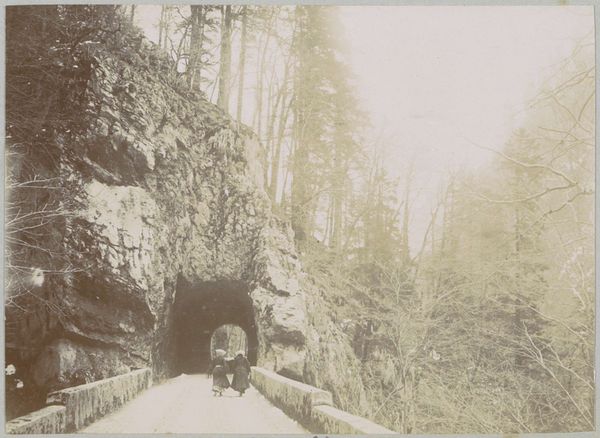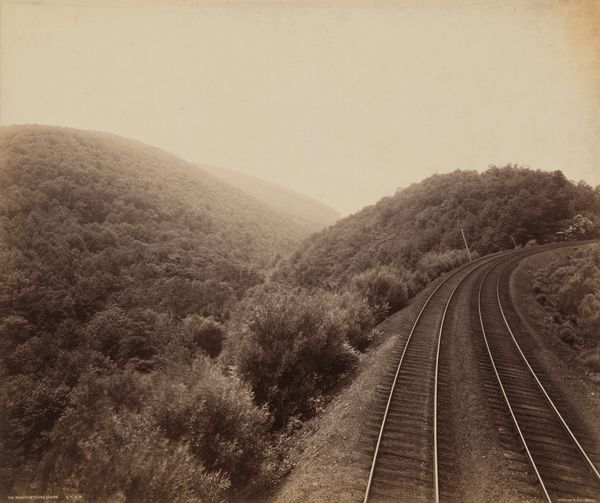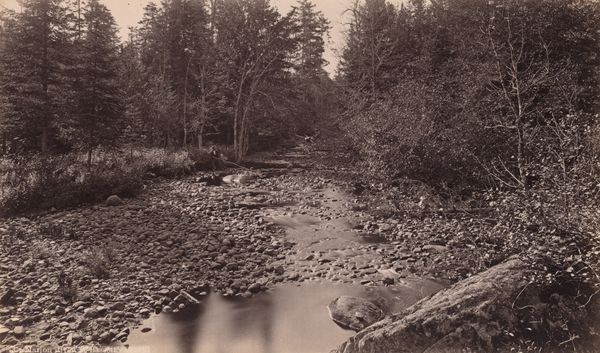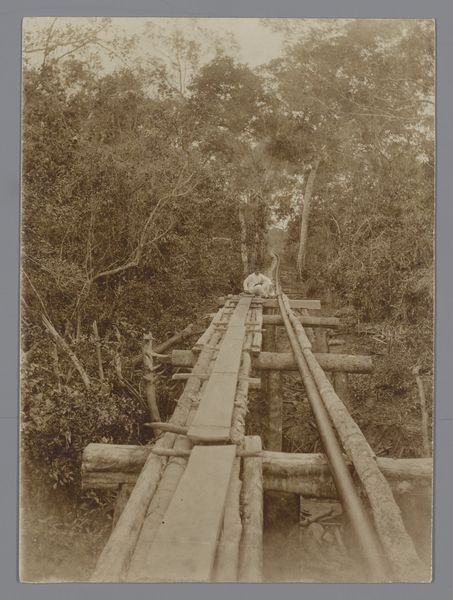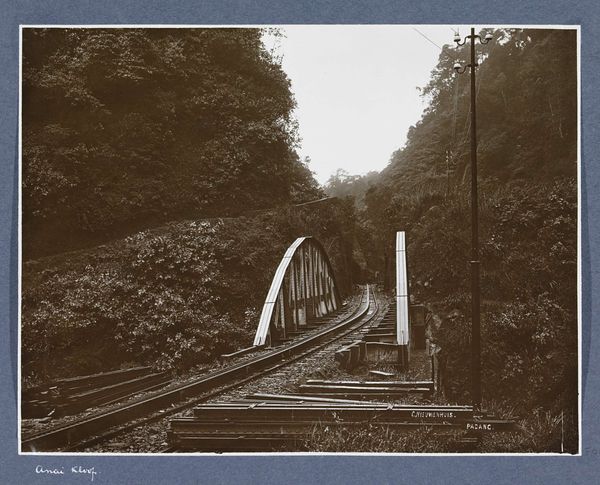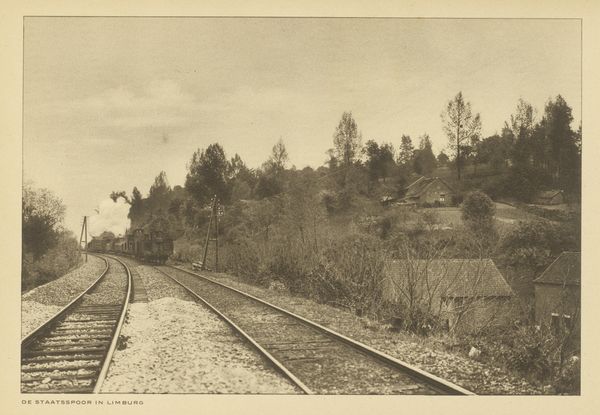
photography
natural shape and form
countryside
landscape
photography
fog
line
naturalism
realism
mist
Dimensions: image: 43.7 × 52.1 cm (17 3/16 × 20 1/2 in.) mount: 49.7 × 59.1 cm (19 9/16 × 23 1/4 in.)
Copyright: National Gallery of Art: CC0 1.0
Curator: Welcome. Here we have "Hemlock Forest," a photograph by William H. Rau, dating back to around 1895. It depicts a set of railway tracks cutting through a dense forest. Editor: My first impression is of an eerie quiet, despite what should be the heavy presence of industry. The sepia tones and slight fog certainly add to that unsettling atmosphere. Curator: Rau was a commercial photographer, very successful, but he also used his platform to document America. Consider the implications here, that the narrative is often one of "progress," this incursion on nature driven by industrial capitalism. This image reflects that specific cultural moment. Editor: Exactly. We see these almost brutally straight railway lines bisecting what was, and still is, an abundant forest. The Romantic painters before him often idealized untouched nature as something sacred; however, this image shows us this collision in progress, one where capitalist intervention, even through something as simple as laying railroad track, comes at the expense of a specific relationship with the environment. Curator: And the fog softens what would otherwise be quite harsh lines, it gives an ephemeral quality to a very real alteration of the landscape. How would we think about this shot differently if the photographer wasn't looking straight into the horizon? If it showed us something else on the margin, other than an obscured future point. Editor: Absolutely, if the focal point was maybe what exists just to either side of the track itself. It emphasizes an unwavering path forward with only vague notions of what it brings. It reinforces the idea of single-minded economic advancement above other possibilities, perhaps ones that don’t necessitate exploiting natural resources this intensely. This is one thing, amongst countless more I'm sure, that we have to continuously remember while interacting with art in the contemporary world. The work doesn't occur in a vacuum. Curator: The lack of human presence, I think, speaks volumes. A human worker laying the tracks, standing guard, etc., and you suddenly shift perspective, so that no one seems to actually be "using" this. This almost feels like a crime scene. Editor: I agree entirely. A stark reminder, really, of how our choices leave traces—both visible and invisible. Thank you, this was enlightening. Curator: Indeed, a powerful piece offering much to contemplate. Thank you as well.
Comments
No comments
Be the first to comment and join the conversation on the ultimate creative platform.
